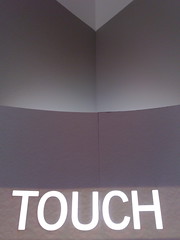
- Image by G A R N E T via Flickr
Although modern prosthetic devices are more lifelike and easier for amputees to control than ever before, they still lack a sense of touch. Patients depend on visual feedback to operate their prostheses – they know that they’ve touched an object when they see their prosthetic hand hitting it. Without sensation, patients cannot accurately judge the force of their grip or perceive temperature and texture.
Todd Kuiken, a professor at Northwestern University and director of the Neural Engineering Center for Artificial Limbs at the Rehabilitation Institute of Chicago, has led the development of a new technique known as targeted reinnervation, which can help amputees control motorized prosthetic arms. He and his team now hope to extend the applications of targeted reinnervation to help patients regain sensory capabilities.
In targeted reinnervation, the motor nerves of a nearby target muscle (usually the chest) are deactivated. Then the residual motor nerves at the end of an amputated arm are transplanted from the stump to the chest. The nerves rewire themselves and grow into the chest muscle. Since amputation of a limb does not prevent the nerves left in the residual limb from signaling, the reinnervation procedure simply gives the signals a new destination.
After the procedure, when a person thinks about moving a muscle in the missing arm or hand, the chest muscle twitches. Electrodes pick up these signals and pass them on to a motorized prosthetic arm, allowing patients to control multiple motor functions like the simultaneous movement of both the elbow and hand to throw a ball.
The regrowth of sensory nerves after this procedure was discovered by accident. The first patient to undergo targeted reinnervation told Kuiken and his other doctors about an interesting sensation he experienced: when someone touched the area of his chest where his nerves had regrown, he felt as if someone was touching his missing hand. The sensory nerves from his arm stump had reinnervated the skin above his chest muscle. He was experiencing touch to the reinnervated skin as being applied to his missing limb. It turned out that sensory reinnervation such as this was common following the procedure.
SOURCE AND READ MORE FROM HERE…….
Related articles
- Otto Back Healthcare Provides Prosthetic Arm to Haiti Earthquake Victim-biomedical Treatment (biomedikal.in)

